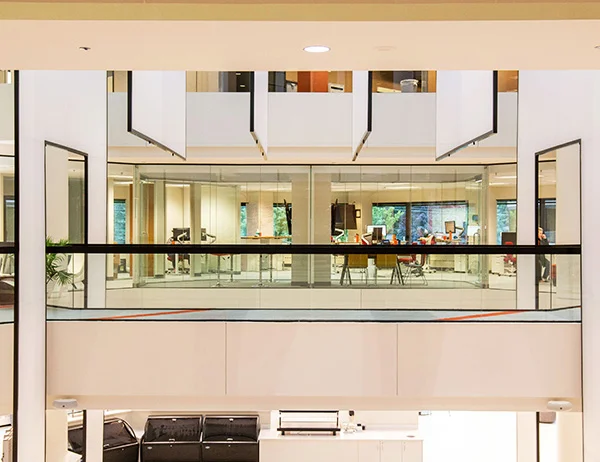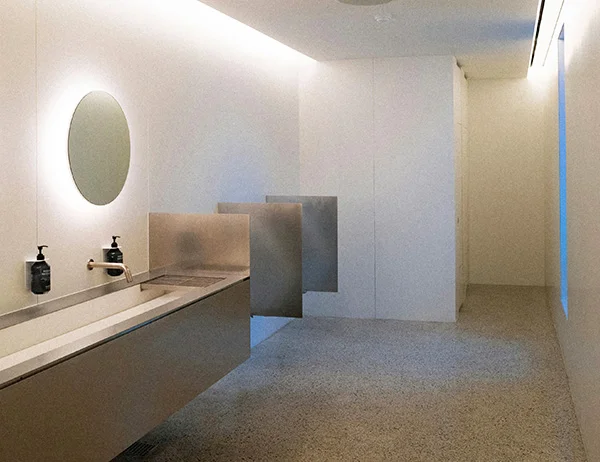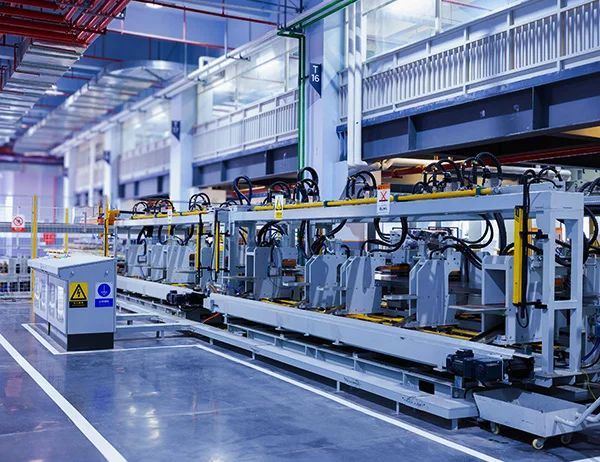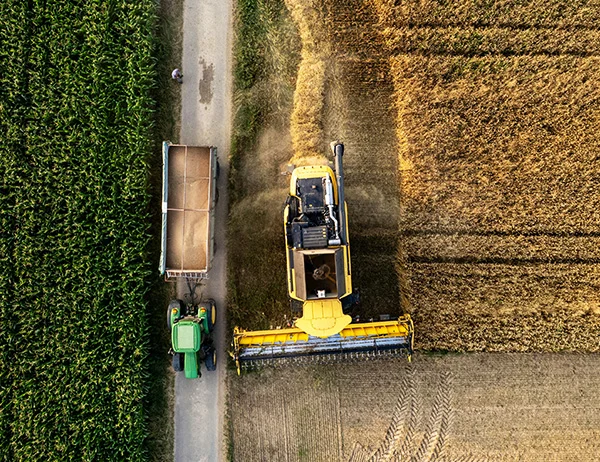Milesight IoT Devices Integration with Kaa IoT Platform
Integrating Milesight devices with KaaIoT creates a powerful, scalable IoT ecosystem.
This integration enables seamless data flow between Milesight’s industrial-grade sensors, gateways, and cameras, and KaaIoT’s enterprise-grade IoT platform. Through MQTT, HTTP, or LoRaWAN protocols, device telemetry and control data are securely transmitted to Kaa IoT platform for visualization, analytics, and automation. As a result, businesses can easily deploy smart solutions in energy management, environmental monitoring, or industrial automation, gaining real-time insights and optimizing performance across connected systems.
Contact us
What We Use Milesight For
Smart City / Environmental Monitoring
Solution goals:
- Monitoring air pollution along roads
- Monitoring microclimate conditions in urban parks
- Early detection of air quality deterioration and sending alerts to citizens
- Integration with municipal systems
Components and Roles:
- Milesight offers a range of environmental sensors in its product lineup.
- Used to connect sensors and transmit data to the Kaa platform.
- Used for large areas that require multiple gateways.

Smart Office / Smart Building
Solution goals:
- Optimization of space utilization
- Lighting automation
- HVAC optimization and control
- Air quality monitoring
- Energy saving (through lighting and HVAC management)
Components and Roles:
- Aggregates data from multiple low-power sensors and transmits it to the server infrastructure (Kaa) via MQTT / HTTP / LNS.
- Example integration is officially documented: how to connect UG65 + AM319 to the Kaa IoT platform via LNS/TTN.
- Detects whether a workspace is occupied, counts the number of people, and identifies when the area is vacant — can trigger automation scenarios such as turning off lights or HVAC systems.
- VS121 is part of the Milesight smart office sensor lineup.
- Detects motion and light levels; used to turn lighting on/off based on presence and ambient brightness.
- Actuator devices that control equipment (lighting, sockets) according to automation scenarios and receive commands from the platform.
- Monitor environmental parameters, provide data for analytics, and enable automatic ventilation control.
- Milesight offers a range of environmental sensors for this purpose.

Smart Restroom
Solution goals:
- Automation of condition monitoring
- Queue information
- Odor detection and monitoring
- Leak and incident notifications
Components and Roles:
- Detects whether a stall is occupied and displays the status on information panels or in mobile applications.
- Measures the level of consumable supplies (paper, soap) to ensure timely replenishment.
- Detects the opening or closing of stall doors, helping to refine occupancy status.
- Detects water leaks, which is critical in areas with plumbing.
- Aggregates all data (occupancy, resource levels, odors, leaks) and transmits it to the platform.

Industrial Monitoring and Automation
Solution goals:
To monitor equipment, environmental, and condition parameters (temperature, humidity, vibration, leaks), and to control ventilation, cooling, pumps, and other systems.
Components and Roles:
- Serves as the central control unit with input/output interfaces and can operate actuators.
- Monitor environmental and equipment parameters.
- Transmits data to the Kaa platform and also receives control commands from Kaa to send to the controller or actuators.

Smart Farming
Solution goals:
Monitoring of microclimate, soil moisture, irrigation control, temperature, CO₂, lighting, and greenhouse ventilation, among other parameters.
Components and Roles:
- Used to monitor and control the microclimate in greenhouses.
- For measuring soil moisture levels (available in the Milesight portfolio or via integration with third-party LoRaWAN sensors).
- Used to monitor concentrations of ammonia (NH₃) and CO₂ in barns, pig farms, and greenhouses.
- Used to control pumps, ventilation systems, and dampers.
- Transmits data to the Kaa platform and also receives control commands from Kaa to send to the controller or actuators.

FAQ
Does the Kaa platform support both public and private LoRaWAN networks?
Yes. Kaa supports both public and private LoRaWAN deployments through integration with The Things Stack (TTS).
For Kaa Cloud or Kaa Next users device can be connected via The Things Stack (public) or via The Things Industries (private).
In self-hosted Kaa, we can deploy your own The Things Stack instance to provide you with a private LoRaWAN network.
What happens if a LoRaWAN device temporarily loses network connection — will data be recovered?
If the network connection is temporarily unavailable, two recovery mechanisms exist:
1. On-device retry / retransmission:
Many LoRaWAN devices support confirmed uplinks and retransmission intervals, so once the connection is restored, the data that was queued locally is sent.
2. LNS buffering:
The Things Stack stores uplinks temporarily (by default up to several hours, depending on plan) if MQTT integrations are disconnected, and resends them once the integration is back online.
How is the data from Milesight LoRaWAN devices processed and stored on the Kaa platform?
Data from Milesight devices flows as uplink payloads via The Things Stack (TTS) → MQTT/HTTPS → Kaa Telemetry API.
Here’s the flow:
1. Milesight device → Gateway → TTS LNS: The device sends LoRa uplinks containing encoded sensor payloads.
2. TTS → Integration: You configure an MQTT or HTTP device integration in TTS that forwards decoded JSON messages (via payload formatter) to Kaa.
3. Kaa Data Collection: Kaa receives the message and stores the telemetry as time series records per endpoint (device).
4. Kaa Endpoint Management: Each Milesight device corresponds to an endpoint that can have metadata, configuration, and credentials stored in Kaa.
5. Storage: Kaa stores data in its internal databases for historical querying, dashboards, and analytics.
Can I create Kaa dashboards and alerts using data from Milesight LoRaWAN devices?
Yes. Kaa includes a web-based dashboard system allowing you to visualize and analyze live or historical telemetry from any connected device, including LoRaWAN ones.
You can create charts, gauges, maps, and tables displaying data such as temperature, humidity, CO₂, voltage, etc.
Alerting is supported via rules and webhook actions — for example, trigger an alert when temperature > 35 °C or battery level < 20 %.
In Kaa Cloud / Kaa Next, dashboards are configured directly in the UI.
Does the Kaa platform provide historical data storage or export options (CSV, Excel, or JSON)?
Yes, Kaa stores full historical telemetry with timestamps.
You can query historical data through the Device Data REST API, retrieving time series for any endpoint.
Kaa Cloud / Kaa Next provide data export capabilities — directly as CSV, Excel (XLSX), or JSON from dashboards or via API.
Developers can automate exports for analytics, reporting, or backup.
Can I share Kaa dashboards publicly or with specific users?
Yes — sharing options depend on your deployment:
Kaa Cloud: You can share dashboards with specific users within your tenant or generate public read-only dashboard links. Each dashboard has an access control list (ACL) allowing fine-grained permissions (view, edit, admin).
Kaa Next: Access control is managed via Kaa IAM (Identity and Access Management), supporting multi-tenant setups and role-based access control (RBAC). You can create service accounts, assign dashboard permissions, or even embed dashboards into other web portals.
Public sharing is often used for demonstrations, environmental dashboards, or public transparency projects, while private links are more appropriate for industrial or building management dashboards.
Is LoRaWAN device data encrypted during transmission?
Yes — end-to-end encryption is built into the LoRaWAN protocol. Each device has two AES-128 session keys:
NwkSKey (network key) for message integrity and authentication.
AppSKey (application key) for encrypting payload data.
The data remains encrypted from the device to the network server (TTS), and only the Application Server (in this case, TTS or Kaa) with the AppSKey can decrypt it.
In addition, the integration between TTS and Kaa uses TLS (HTTPS or MQTTS), ensuring secure transport.
Therefore, data is encrypted both over LoRa radio and over the internet, preventing eavesdropping or tampering.
Are there logs or diagnostic tools available on the Kaa platform?
Yes — Kaa provides several layers of diagnostic visibility:
Device Telemetry Logs: View real-time uplinks and downlinks for each device via the Kaa REST API or UI.
Metrics: Prometheus metrics and dashboards show message rates, success/failure counts, latency, and uptime. (available for self-hosted or Kaa-hosted plans)
Audit: It involves tracking essential activities related to user, device, or any other type of resource. https://www.kaaiot.com/docs/audit (available for self-hosted or Kaa-hosted plans)
How can I customize data decoding (e.g., using payload decoders)?
If we’re talking about LoRaWAN devices, data decoding usually takes place in The Things Stack using payload formatters, which are snippets of JavaScript code. A payload formatter allows you to decode binary data sent by the device into JSON format, enabling the platform to process this data seamlessly. It’s also possible to use the Rule Engine for parsing more complex data structures.
What is the maximum data payload size supported by the Kaa?
Kaa itself supports large telemetry payloads, but the effective size is constrained by LoRaWAN and MQTT protocol limits:
LoRaWAN: Max payload ranges from 51 bytes (SF12) to 242 bytes (SF7) depending on region and data rate.
TTS Integration: MQTT/HTTP integrations can handle messages up to several kilobytes.
Practically, LoRaWAN devices send small payloads, but if you batch data (e.g., sensor arrays), Kaa will still handle it efficiently as long as your integration respects Kaa’s REST/MQTT API limits.
Kaa APIs: Support payloads up to 1 MB per request (configurable).
Milesight Devices Integrated with the Kaa IoT Platform
Smart environments powered by Milesight sensors and the Kaa IoT platform help businesses monitor, automate, and optimize their spaces. These systems collect real-time data on occupancy, air quality, temperature, humidity, or equipment status. LoRaWAN gateways such as UG65 or UG67 securely transmit this data to Kaa via MQTT or HTTPS, where it is visualized on dashboards and used to trigger automation scenarios.
In offices, occupancy and light sensors, such as the VS121 and WS202, reduce energy waste by managing HVAC and lighting based on presence and brightness. Air-quality devices, such as the AM107 or AM319, maintain a healthy work atmosphere, while smart controllers, like the WS558, automatically control sockets, lamps, and fans. In public restrooms, odor, leak, and fill-level sensors ensure cleanliness and prompt maintenance, thereby reducing the need for manual inspections.
Milesight and Kaa technologies also extend to outdoor and industrial environments. Air-quality and distance sensors monitor pollution, water levels, or waste containers. All data flows into the Kaa platform, where it becomes actionable insight for predictive maintenance, energy savings, and sustainability.
Together, Milesight hardware and Kaa software form a scalable and secure ecosystem that transforms any facility (office, city, or agricultural site) into a connected, efficient, and data-driven environment.

 Request a demo
Request a demo